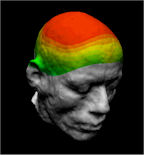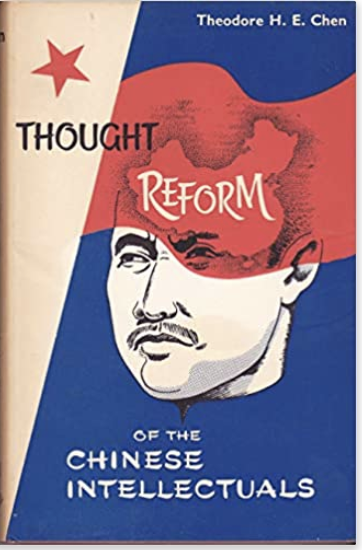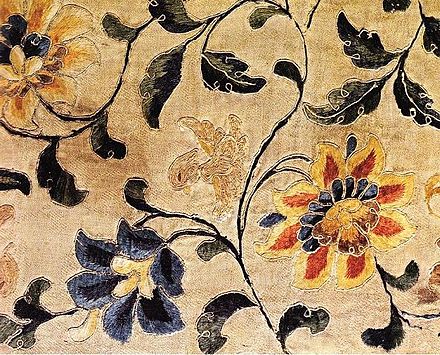The relationship between basic psychological, processes and underlying functions of the nervous, system. Biological bases of sensation, perception,, motivation, emotion, learning, memory,, psychopathology. Laboratory sections supplement, lectures and readings with practical experience in, neural anatomy, animal (rat) behavioral testing,, and neuropsychological testing. Seniors will be, given registration preference during the first, round of registration.
- Teacher: Yueping Zhang

The goal of this course is to introduce students to the diverse field that is broadly called “neuroscience” these days, but has been known by many different names since its birth in the late 1800s. We will survey physiological processes related to the control of behavior in human and nonhuman species, as well as other biological mechanisms that are relevant to issues in psychology. Topics include basic functional neuroanatomy, the structure and function of neurons and neuronal transmission, and the relationship between brain systems and complex behaviors, cognition, and emotion. We will also discuss neurological, neuropsychological, and psychiatric disorders. In addition to serving as a general survey of the biological aspects of psychology. This course prepares students for more advanced neuroscience courses (Psy 350, Psy 355, Psy 380, Psy 410).
Students who have received credit for PSY/BIO 252, should not enroll in this course. Not open to, students with previous credit in PSY 350 or PSY, 355.
Students who have received credit for PSY/BIO 252, should not enroll in this course. Not open to, students with previous credit in PSY 350 or PSY, 355.
- Teacher: Todd Watson

In this course, you will gain an understanding of descriptive statistics (used to summarize data) and basic inferential statistics (used to test hypotheses and draw conclusions) using the “classical” or “frequentist” model. You will learn to apply the principles learned during the course to not only to better understand psychology and other fields of scientific research, but also to understand how statistics are used (and sometimes abused) in daily life. Topics will include the properties of numerical distributions, measures of central tendency, variability, correlation and bivariate regression, t-tests, analysis of variance (ANOVA), and a tiny (and I mean tiny) bit on nonparametric statistical techniques. I also promise that all these words will make sense by the end of the semester. In addition, you will gain experience using statistical software (JASP) to analyze and display research data. Finally, you will gain experience in presenting research findings in American Psychological Association (APA) format.
You can't earn credit for both Psy 200 and AP/IB Statistics
You can't earn credit for both Psy 200 and AP/IB Statistics
- Teacher: Todd Watson

Introduction to the practice and research methods, of history. Reading and critical analysis of, primary sources and scholarship organized around, themes or problems in history. Focus varies, depending on areas of the instructor's teaching, and/or research. Assignments are organized around, a substantial final project and/or several, smaller projects. May be taken twice with change, of topic.
- Teacher: Susan Glosser
The history of women and gender in the United, States from the colonial period to the present,, with a focus on the 19th and 20th centuries as, influenced by class, race, and region. Topics, include the transformation of a household economy, to an industrial economy; the influence of slavery, and emancipation on the experience of women, bound, and free; women's movement into low-paid "women's, work" and their designation as the primary, consumers in a consumer society; women's, involvement in social reform; changing notions of, women's (and men's) sexuality; the conflicted, history of women's suffrage; the relationship, between ideologies of gender and imperialism;, suburbanization and the "feminine mystique"; and, the rights revolutions of the 20th century.
- Teacher: Reiko Hillyer

This course introduces students to the wide variety of resources and analytical methods that historians and others engaged in historical inquiry use in their work. Throughout the semester students will acquaint themselves with the full range of bibliographical resources and will practice the art of historical interpretation, relying on different types of materials including—but not limited to—oral interviews, photographs, documentary film, maps, newspapers and periodicals, government records, manuscripts, art and architecture, and physical artifacts. Through in-class exercises and individual editing projects students will gain skills in library research, editing, writing, analysis of sources, and historical judgment. The course will also introduce students to basic historiographical trends to help them understand how different methodologies have been developed in response to particular historical contexts. Students will not only be asked to master the techniques and skills of historical inquiry, but also to critically analyze the ways in which different methods lead to specific forms of knowledge production—especially in regard to our thematic focus—alternative histories of Portland.
- Teacher: Elliott Young

Early histories of China and Japan from earliest, origins to the 13th century. Prehistory; early, cultural foundations; development of social,, political, and economic institutions; art and, literature. Readings from Asian texts in, translation. The two cultures, covered as, independent entities, compared to each other and, to European patterns of development.
- Teacher: Susan Glosser